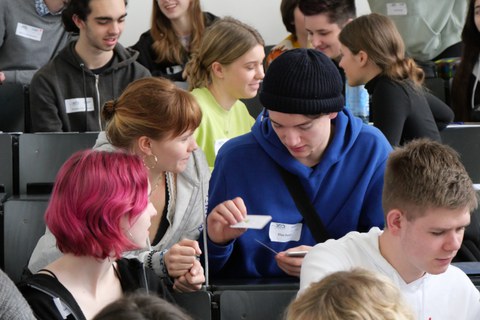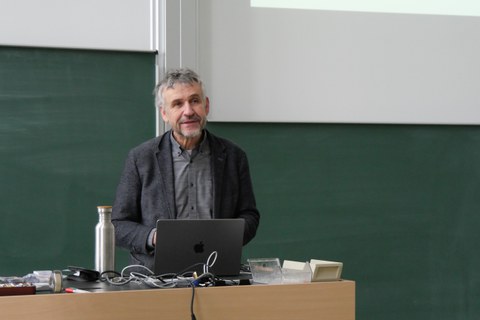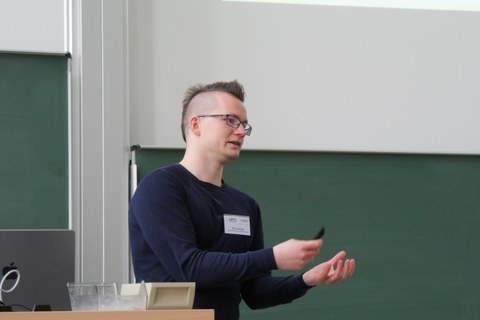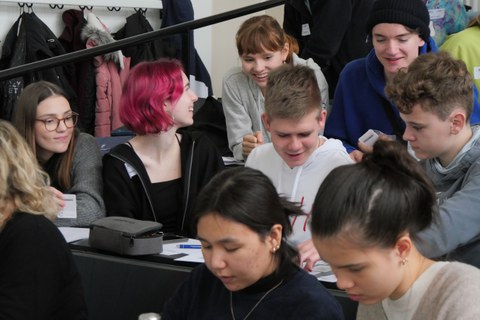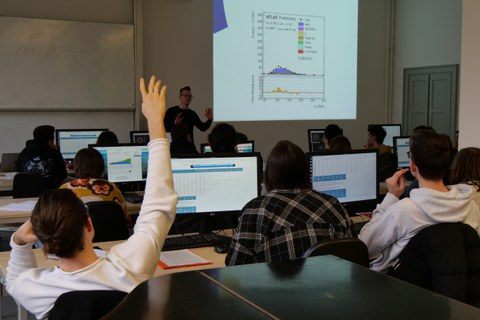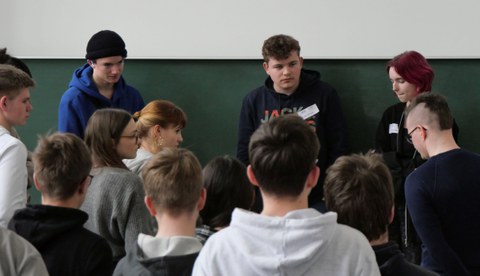Mar 14, 2023
How the universe works – students analyze the properties of the smallest particles at the "International Masterclasses: hands on particle physics" at TUD
The fact that the TU Dresden is a regionally anchored, globally active university was shown at this year's International Master Class "hands on particle physics": The Saxon students who came at the TUD on this day to deal with the small big world of particle physics came from Seifhennersdorf, Leipzig and Zwickau, among others. In the afternoon, they met with students from Georgia in a video conference to analyze the results of their data evaluation together. These three groups make up just a fraction of the more than 200 participating institutions in 60 partner countries worldwide.
To start with, Prof. Michael Kobel, Vice-Rector Education and Chair of Particle Physics, answered the fundamental question "Why actually particle physics" with arguments that are as simple as they are convincing: In order to find answers to the core questions of our lives - How did the universe develop after the Big Bang? What are the building blocks of everything?
But scientists who do research on particle physics are also at the forefront of the development of cutting-edge technologies. After all, the physicists at the CERN research center (Conseil Européen pour la Recherche Nucléaire) have not only been using AI as a matter of course for decades, they also invented the World Wide Web. The CERN is impressive proof that international cooperation is a key factor for successful research.
This set the horizon of expectations for the potential future generation of physicists. Doctoral student Max Stange introduced the specific tasks that the scientists for one day would take on. First, everyone was able to familiarize themselves with the various particles, their properties, their history of discovery and the gap that the Higgs boson actually filled in 2012.
The definitive discovery of the Higgs boson was a milestone that explained how particles get their mass. Research into the precise properties of the Higgs particle continues, mainly through the analysis of events that occur as a result of collisions. Therefore, the participants were given the task of developing their own theories of what happens in a particle collision - and to verify this theory using their own measurements. The students were then able to compare their results with those of longer series of experiments at CERN and found that their analysis was in excellent agreement with the CERN results.
“It is great to be right at the source of what science really does. And not just follow the prepared textbook exercises,” a student, Elias Pantzier from Leipzig, summed up the best of the day. "At CERN, of course, all these calculations are made by algorithms, but here, we learn to understand what's behind them and how the measurements really work," adds his classmate Rosali Jakob.
The data analysis was also very popular with the other participants, whether they were in 9th or 11th grade. Physics advanced course participants were there as well as those who had opted out of physics. Obviously, many people share an interest in the big questions of the universe – in Saxony and around the world.

